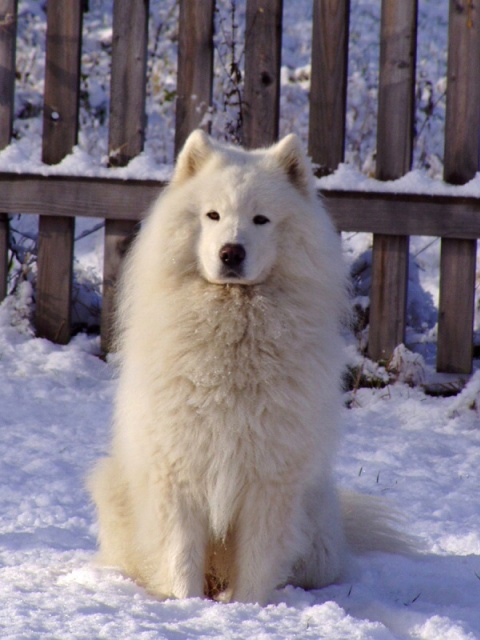Aiaskima Samoyed
Samoyed
Today´s Samoyeds are descendants of dogs first developed many centuries ago by nomadic Samoyed tribes of north-central Siberia, one of the toughest homelands on earth. Preserved in isolation by the ruggedness of this Arctic territory, the Samoyed remained mostly unchanged over several thousand years, making it today one of the oldest breeds.
The Samoyed tribes were semi-nomadic reindeer herders. In summer, they grazed their reindeer on the ground-hugging plants of the  Arctic tundra. In winter, they retreated with their herds to subarctic forests. To supplement their livelihood, Samoyedic tribes hunted and fished. To Samoyedic wanderers, only reindeer were more significant than their precious, multipurpose dogs. Occasionally, a dog's hide with its long hair might end up as part of human clothing. Usually, though, the dogs helped the Samoyedic tribes herd their reindeer and hunt wild animals. Samoyeds also transported their masters across the snow in dog sleds.
Arctic tundra. In winter, they retreated with their herds to subarctic forests. To supplement their livelihood, Samoyedic tribes hunted and fished. To Samoyedic wanderers, only reindeer were more significant than their precious, multipurpose dogs. Occasionally, a dog's hide with its long hair might end up as part of human clothing. Usually, though, the dogs helped the Samoyedic tribes herd their reindeer and hunt wild animals. Samoyeds also transported their masters across the snow in dog sleds.
The tribal Samoyed breeders were clever. They made their dogs beautiful and charming as well as solid workers because beauty and charm had essential survival benefits for people living in an environment inherently hostile to human life.
They must have loved their dogs greatly to create gentle animals that dote on children and have basically calm, predictable temperaments.
As living blankets, dogs often brought comfort to Samoyed people in Siberia's biting cold winter nights.
Samoyed is attractive „white smiling dog“, with long, sparkling white coat contrasting with dark nose and eye rims. The upright, pointed ears, long muzzle, and plume like tail curled over a moderate-sized body identify it as one of the romantic husky breeds. The dark lip lines accent the expressive Sammy "smile".

